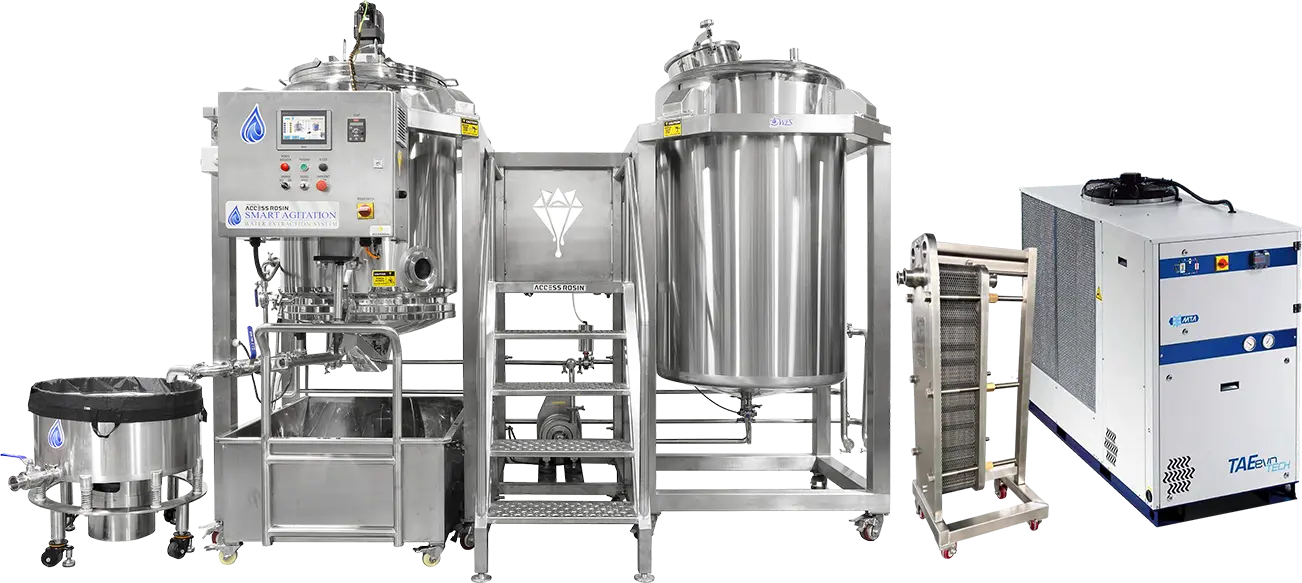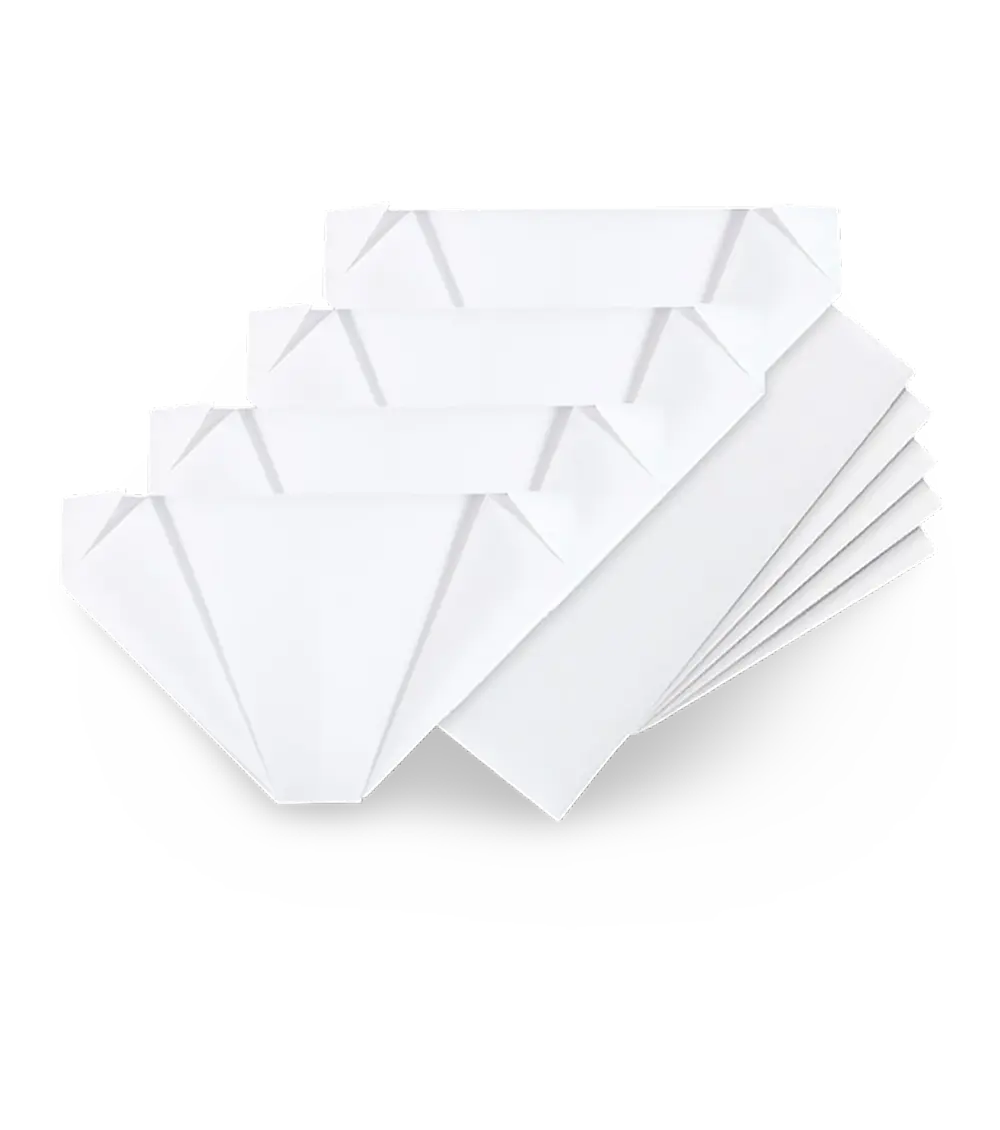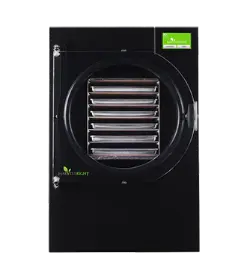As solventless extraction continues to dominate the cannabis industry, the importance of packing rosin bags properly cannot be overstated. Whether you're pressing flower, kief/dry sieve, cured resin, or live resin, the success of your extraction process hinges on precision—from choosing the right bag to applying the correct pressure and temperature. In this blog, we’ll break down the best practices for each material type, the number of bags required, and help you avoid common issues such as slippage, blowouts, and reduced flow.
Understanding the Material-Specific Approach
The first step in optimizing your rosin extraction process is understanding how different materials require different bag specifications. Flower, kief/dry sieve, cured resin, and live resin each have unique properties that dictate the micron size, bag thickness, number of bags, and volume per bag. Let’s dive into each material.
1. Flower
Flower material is much less prone to issues like slipping and blowouts because it provides enough grip in the rosin bag to prevent these errors.
- Recommended Micron Size: 110µm to 160µm.
- Volume per Bag: 12g to 28g.
- Bag Count: Typically 1 bag per press.
- Bag Thickness: Aim for a thinner rosin bag for lower yields, which creates the optimal channel gap for flow.
- Expected Yield: 10% to 20%.
Best Practices for Flower:
- Temperature: A range of 190°F to 210°F is ideal, depending on the strain and quality of the flower.
- Pressure: Start with light pressure and gradually ramp up to avoid blowouts, especially at higher temperatures.
- Time: Time is less crucial for flower as it naturally grips inside the bag, preventing slippage. Focus more on balancing pressure and temperature for the best yield.
Using 1 bag per press for flower helps to lower the cost of production per gram, as fewer bags are required compared to materials like live resin.
2. Kief / Dry Sieve
With kief or dry sieve, you’re working with higher concentrations of trichomes, making extraction more efficient and consistent.
- Recommended Micron Size: 32µm to 90µm.
- Volume per Bag: 10g to 40g.
- Bag Count: Typically 1 bag, but 2 bags can be used if needed to avoid slippage.
- Bag Thickness: Keep it thin to optimize flow, especially with low yields.
- Expected Yield: 20% to 40%.
Best Practices for Kief:
- Temperature: 160°F to 190°F is optimal to preserve terpenes and cannabinoids.
- Pressure: Apply moderate pressure throughout the press, allowing the resin to flow freely without over-pressurizing.
- Time: Similar to flower, slipping is rare with kief or dry sieve. Time is less critical, but it's still important to allow the resin to fully liquefy before applying full pressure.
Using 1 bag for kief or dry sieve can lower the cost of production per gram, but for more sensitive presses or when handling larger volumes, 2 bags can be used to ensure safety from slippage.
3. Cured Resin
Cured resin behaves similarly to flower and kief in terms of stability during pressing. It's less prone to slippage because it's not as greasy or soft as live resin, but pressure settings differ.
- Recommended Micron Size: 32µm.
- Volume per Bag: 15g.
- Bag Count: Typically 1 bag or 2 bags depending on the sensitivity of the material.
- Bag Thickness: Keep the bag thin to prevent any flow restrictions.
- Expected Yield: 20%.
Best Practices for Cured Resin:
- Temperature: 160°F to 180°F is the sweet spot for preserving flavors while getting a smooth press.
- Pressure: Start with light pressure (300-500 psi) and gradually increase up to 1000-1500 psi to avoid forcing contaminants into the rosin. Cured resin can handle higher peak pressures due to its stability.
- Time: Like flower and kief, cured resin is more stable, so time is not as critical, but gradual ramp-up of pressure is still important to avoid uneven extraction.
Using 1 bag is generally sufficient for cured resin, but 2 bags can be used when pressing larger quantities or in situations where additional safety is needed to avoid slippage.
4. Live Resin
Live resin is the most delicate material to work with due to its greasy texture. It's far more prone to slipping and blowouts, requiring precise control over pressure, temperature, and timing. For this reason, double-bagging is crucial.
- Recommended Micron Size: 73µm to 32µm.
- Volume per Bag: 30g to 50g.
- Bag Count: Always 2 bags per press to prevent slippage and blowouts.
- Bag Thickness: Thicker pouches work best for higher yields, but make sure not to overpack.
- Expected Yield: 70% to 95%.
Best Practices for Live Resin:
- Temperature: Use a lower range of 140°F to 170°F to retain terpenes.
- Pressure: Moderate pressure is essential, and patience is key. Start slow and let the resin flow naturally before applying full pressure.
- Time: Time is critical for live resin, as it's prone to slippage. Allow sufficient time for the resin to fully liquefy before applying too much pressure, to prevent slipping and blowouts.
The use of 2 bags per press for live resin is critical for ensuring that the greasy texture doesn't cause slips or blowouts. Although double-bagging increases production costs, it is necessary to ensure the quality of the final product. However, the yields from live resin are typically higher, helping to offset the additional cost of using more bags.
The Impact of Bag Count on Cost and Yield
The number of bags used in each press directly impacts the cost per gram of production. For materials like flower or kief, which can typically use 1 bag, the cost is lower. However, materials like live resin, which require 2 bags per press, incur a higher cost due to the need for double-bagging to prevent slippage.
- 1 Bag: Using a single bag reduces the material cost, making the production of each gram of rosin more economical.
- 2 Bags: For materials prone to slippage, such as live resin, double-bagging is essential to ensure a high-quality product but increases the overall cost of production.
When calculating the cost of production, operators must weigh the increased bag usage for sensitive materials like live resin against the higher yield they deliver. The key is to maintain a balance between cost and quality to achieve the best results.
Optimizing Pressure, Time, and Temperature for Success
Pressure Adjustments:
Pressure settings vary by material. For cured resin, higher peak pressures (1000-1500 psi) are acceptable, as this material is more stable and less prone to slippage. For live resin, start with lighter pressure and gradually increase to avoid blowouts.
Safety Zone for Resin Flow:
The "safety zone" is most critical for live resin, where lower temperatures and slower pressure ramp-ups are essential to prevent slippage. In contrast, flower, kief, and cured resin can tolerate faster pressure increases and higher peak pressures.
Conclusion:
Mastering the art of packing rosin bags and optimizing your press settings for different material types is essential for extracting high-quality rosin. Whether you are using 1 bag for flower or cured resin or double-bagging for live resin, understanding the correct bag count, pressure, and temperature settings will ensure the best possible results.
At Access Rosin, we provide state-of-the-art equipment and expert support to help operators dial in the perfect recipe for solventless extraction. Whether you're working with flower, kief, cured resin, or live resin, our systems are designed to give you the precision and flexibility you need to succeed.
For more detailed information and to explore our range of rosin presses and bags, visit Access Rosin’s website.

 Spin Flow Vibrator
Spin Flow Vibrator
 FLUID - Traditional Hand-Pump
FLUID - Traditional Hand-Pump AIR - Automatic & Manual
AIR - Automatic & Manual The Kwäd - Automated / Muti-Pouch
The Kwäd - Automated / Muti-Pouch
 Wash / Sieve (Bubble) Bags
Wash / Sieve (Bubble) Bags Rosin Bags
Rosin Bags Parchment Paper
Parchment Paper
 Harvest Right
Harvest Right Holland Green Science
Holland Green Science Accessories
Accessories